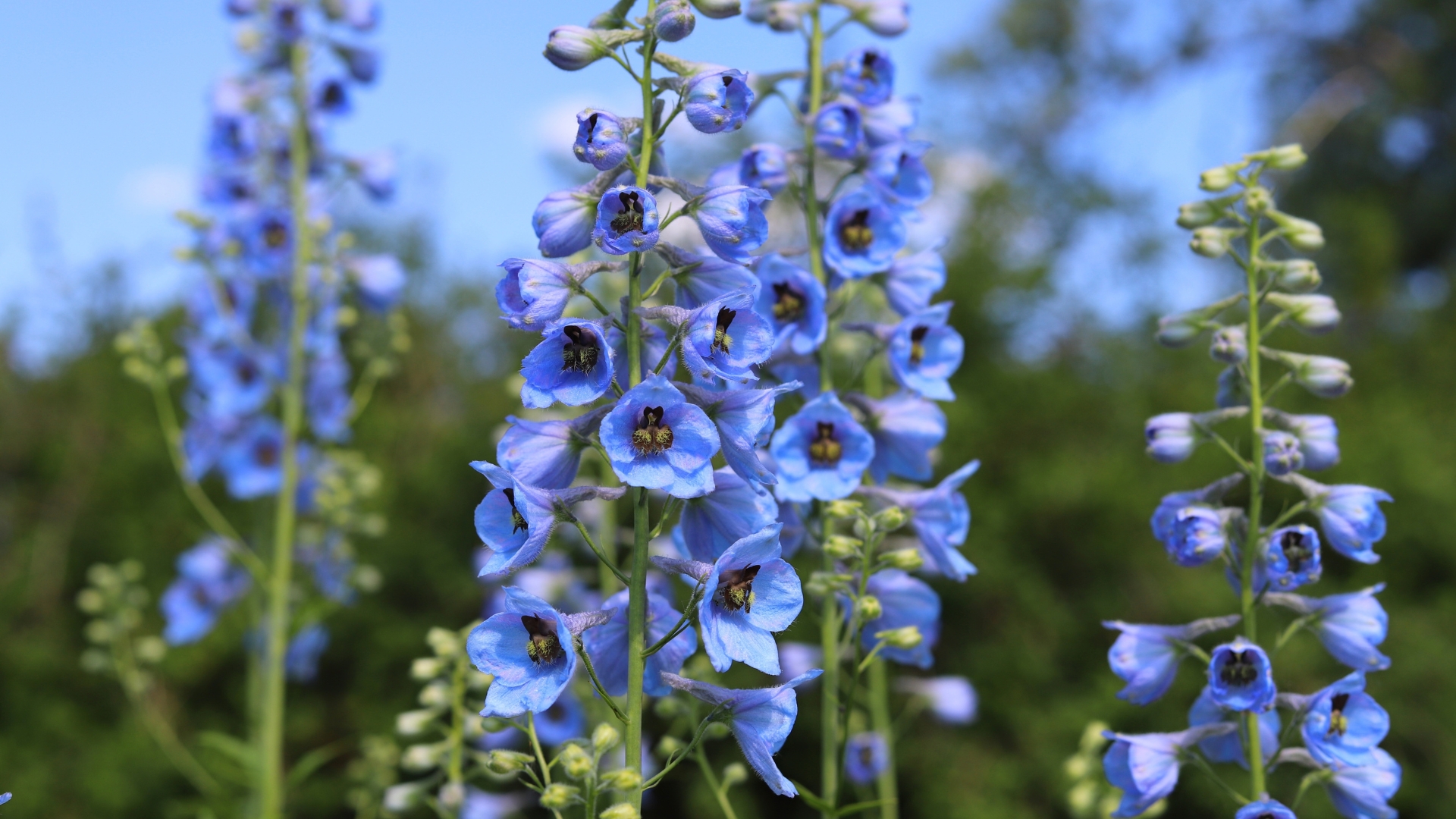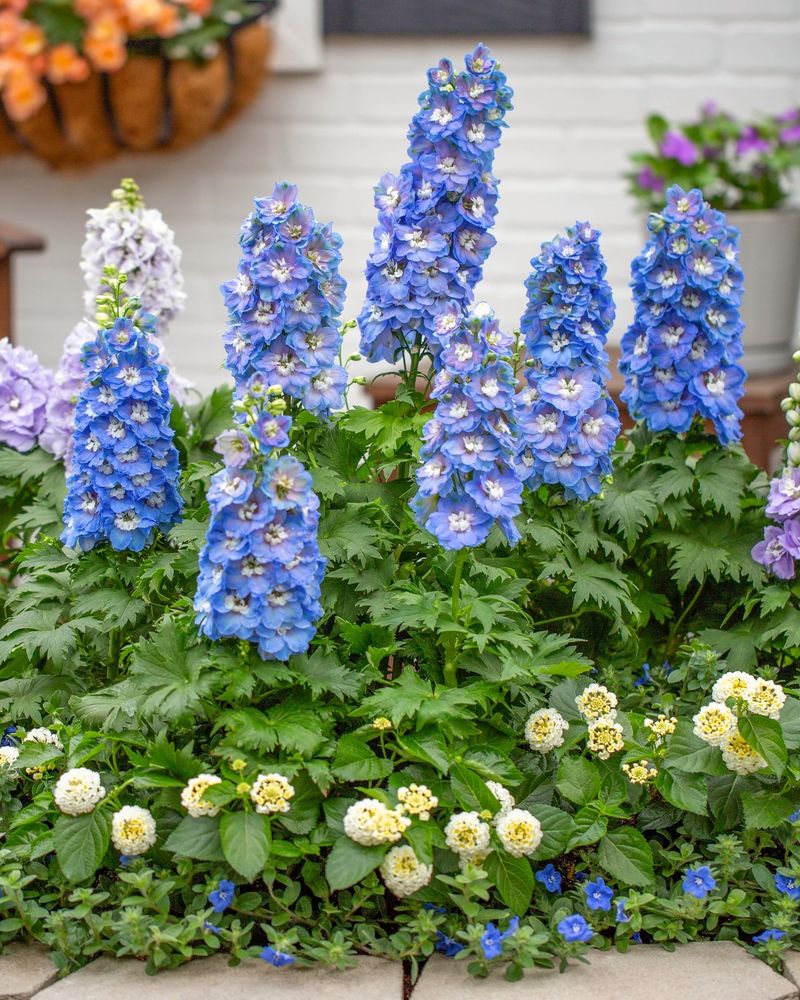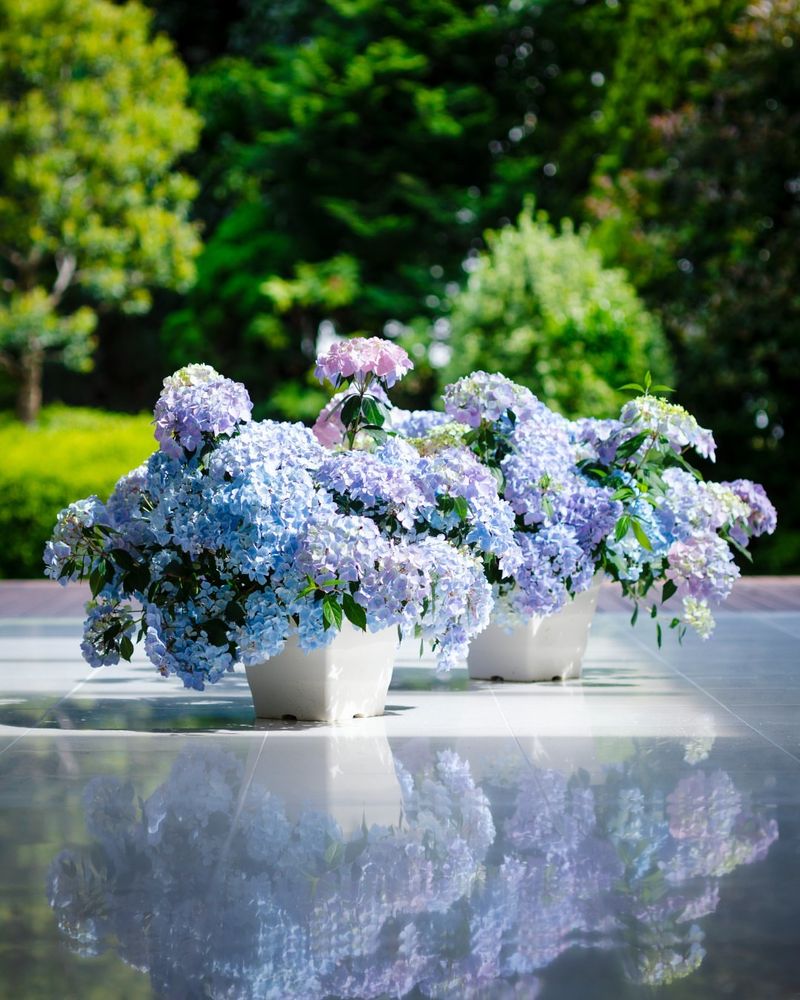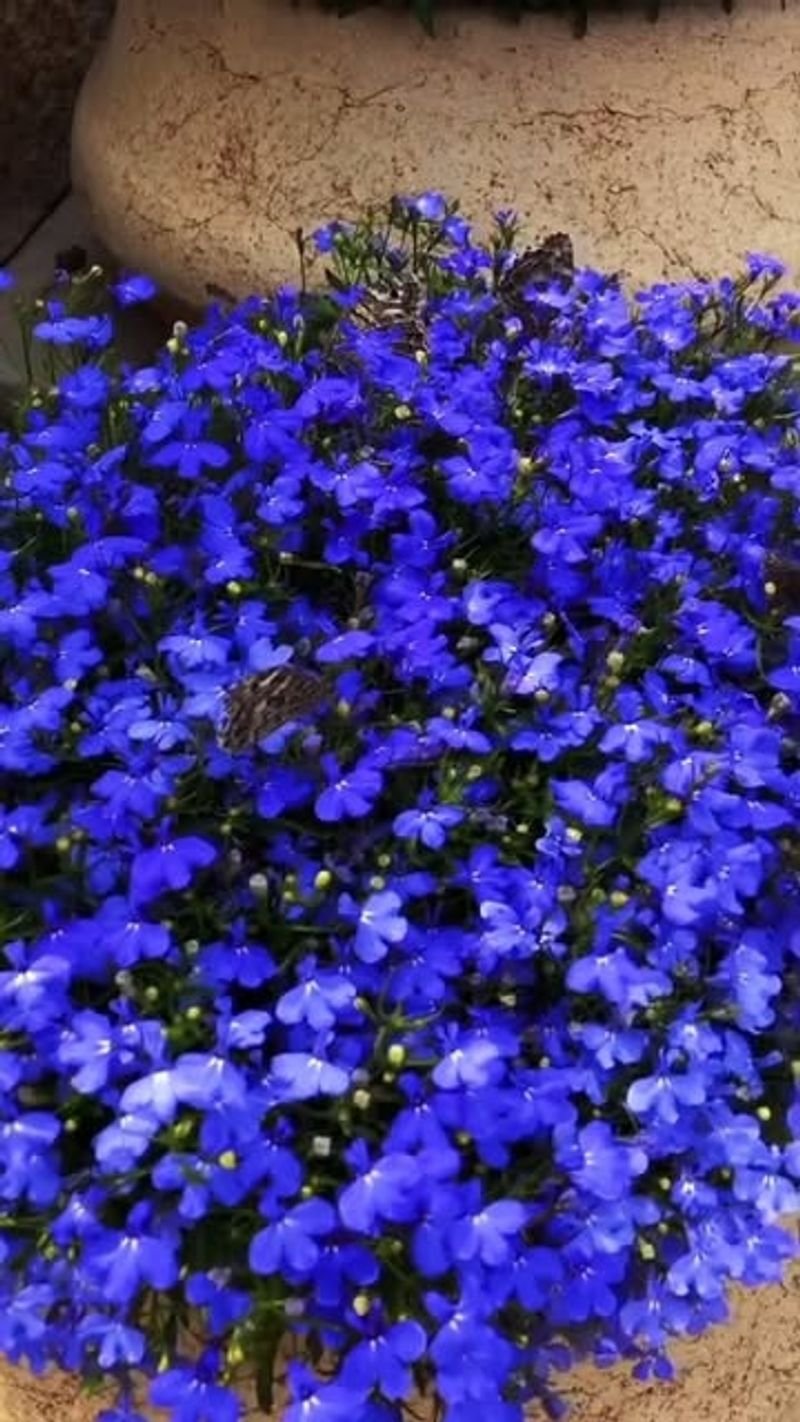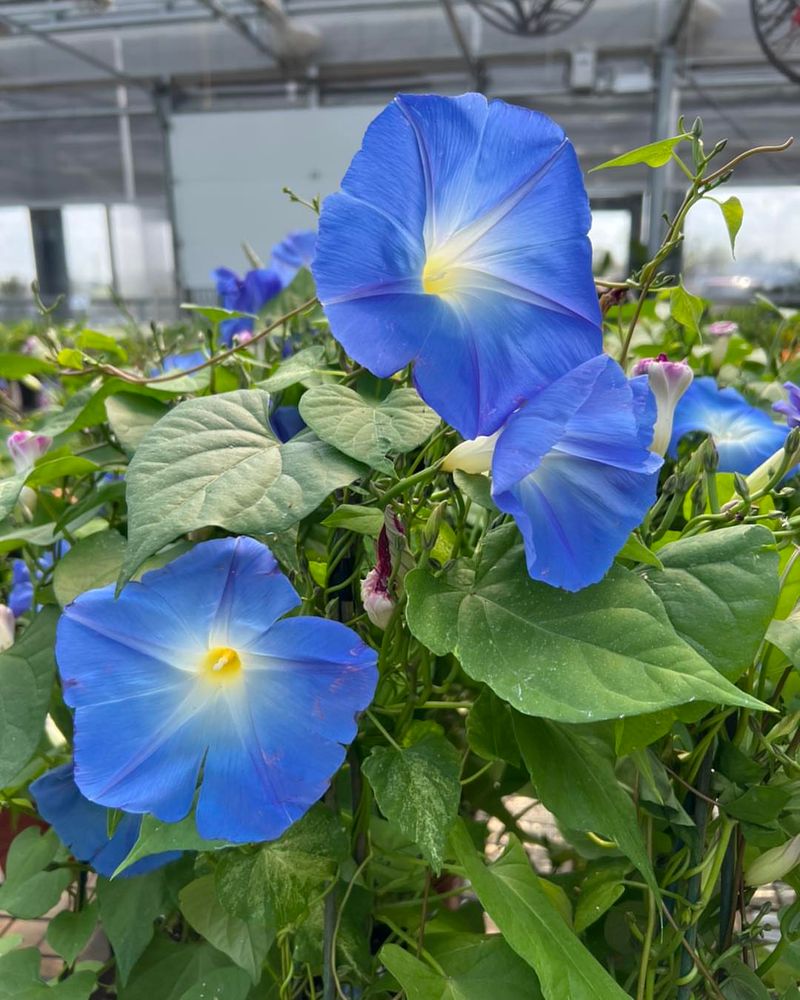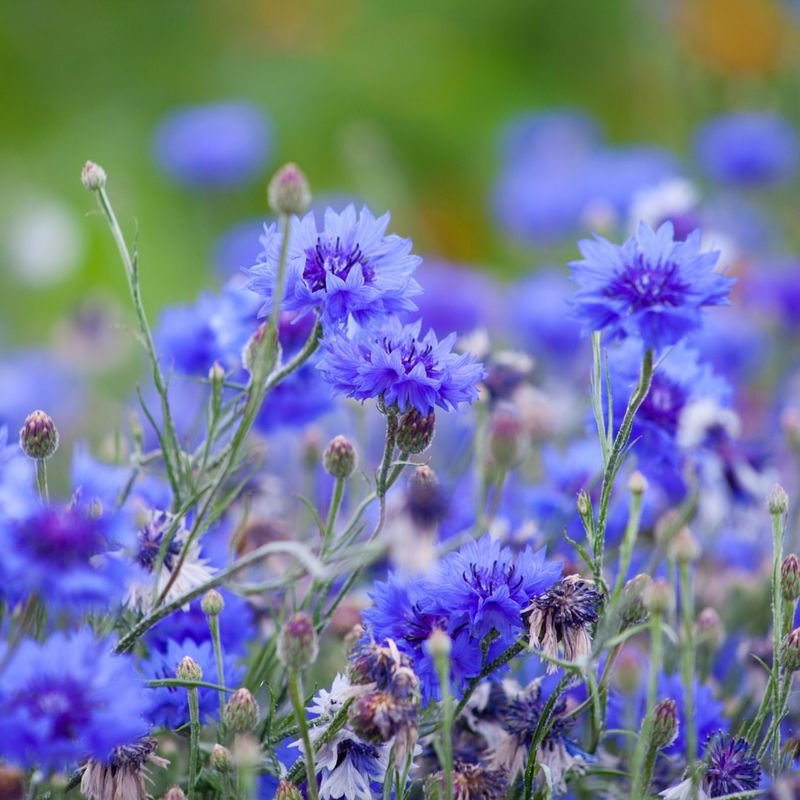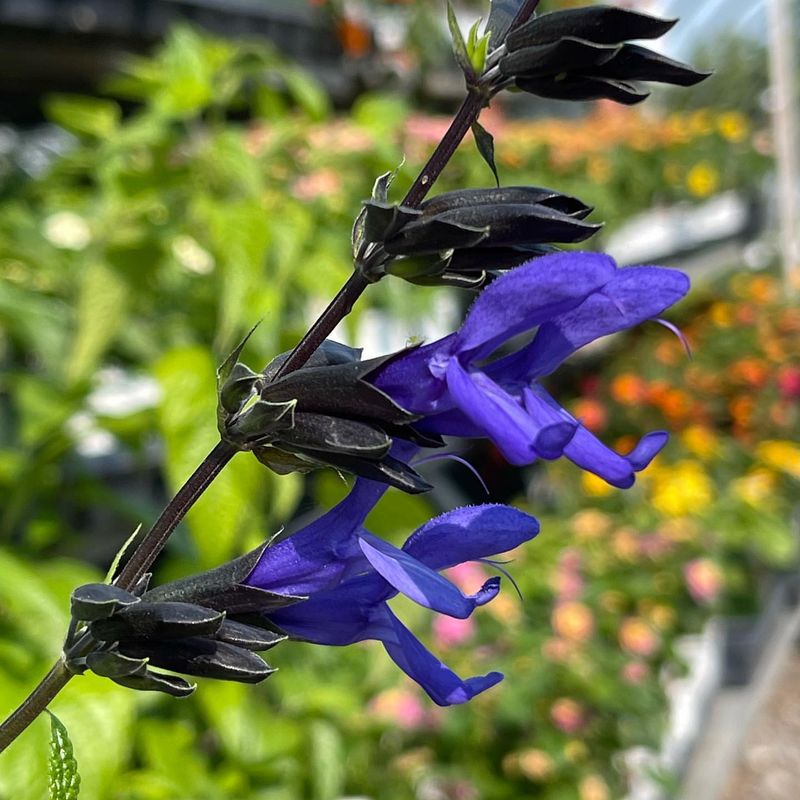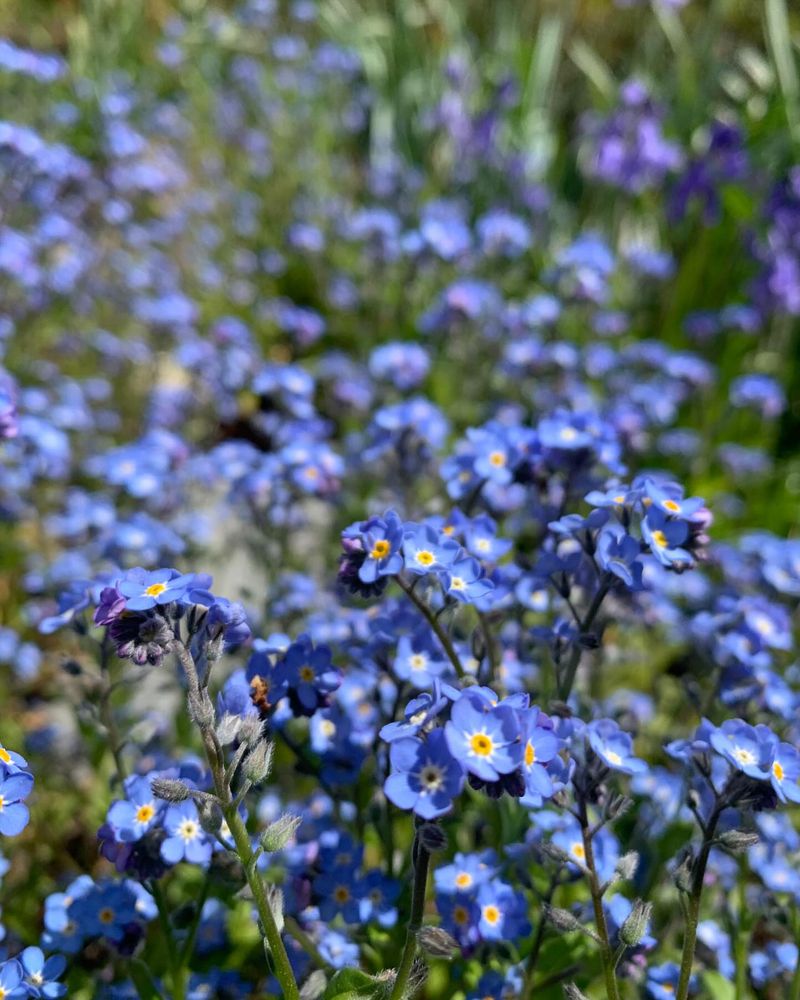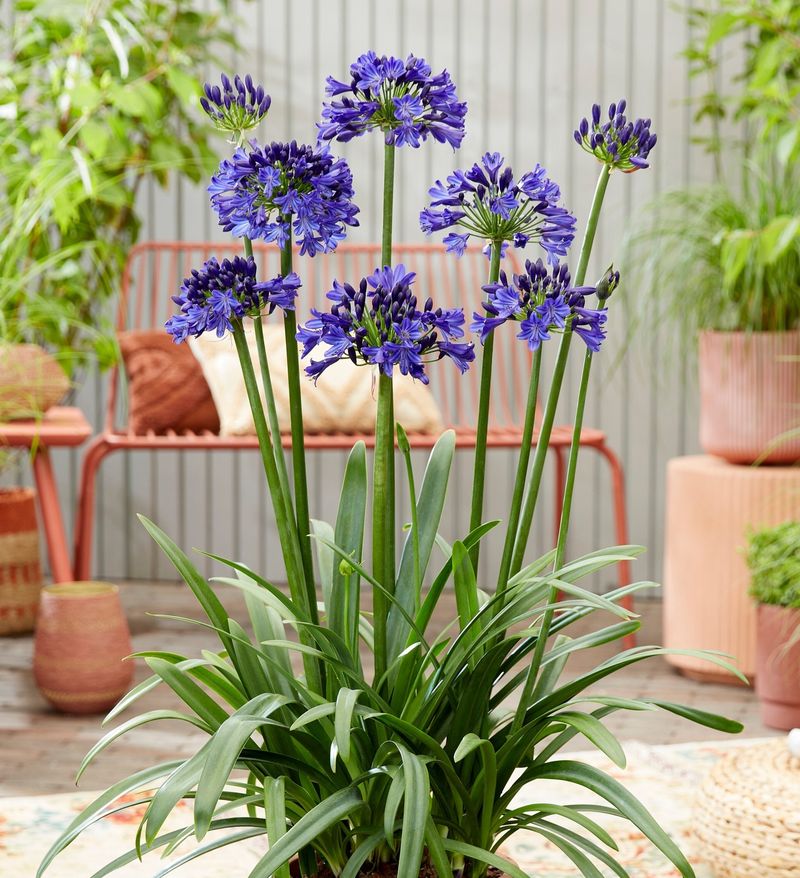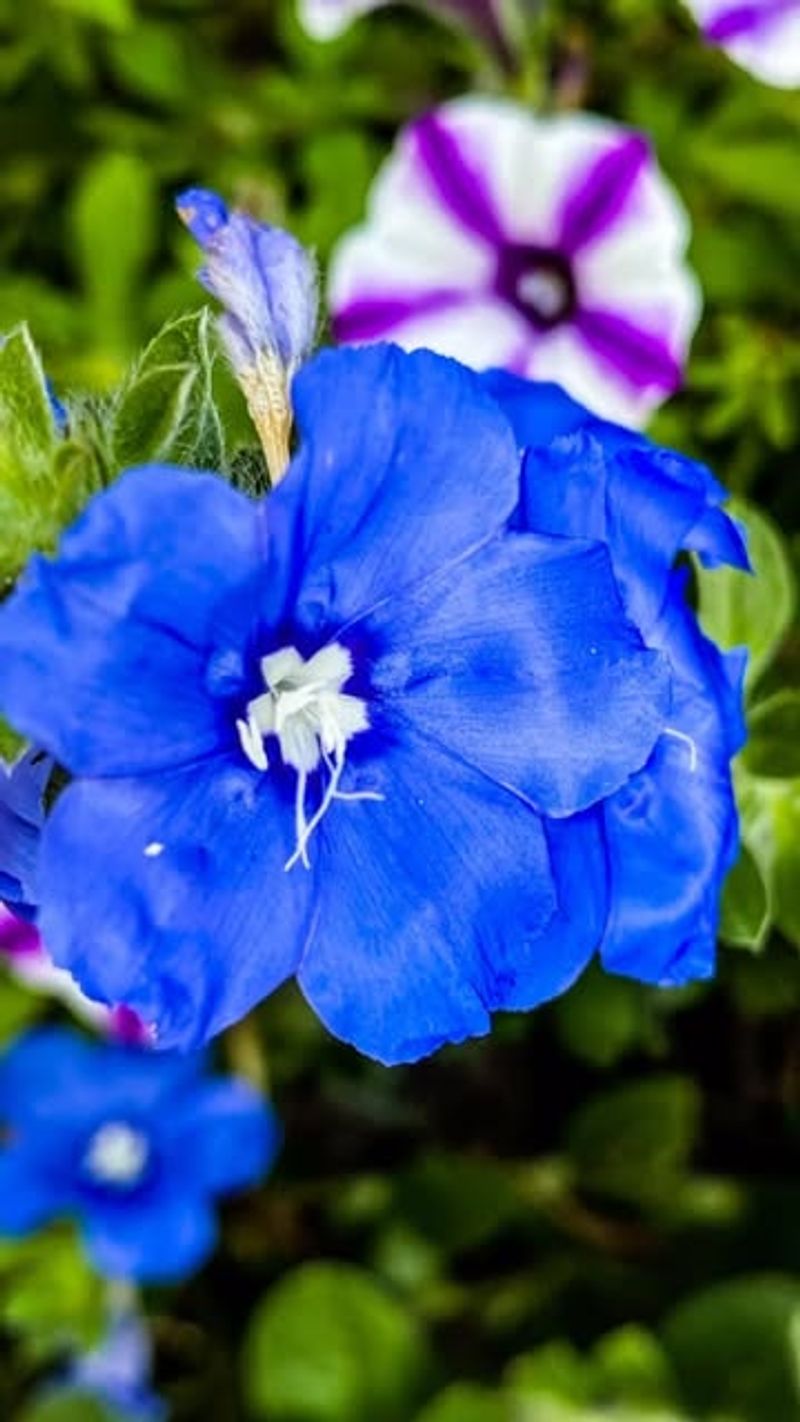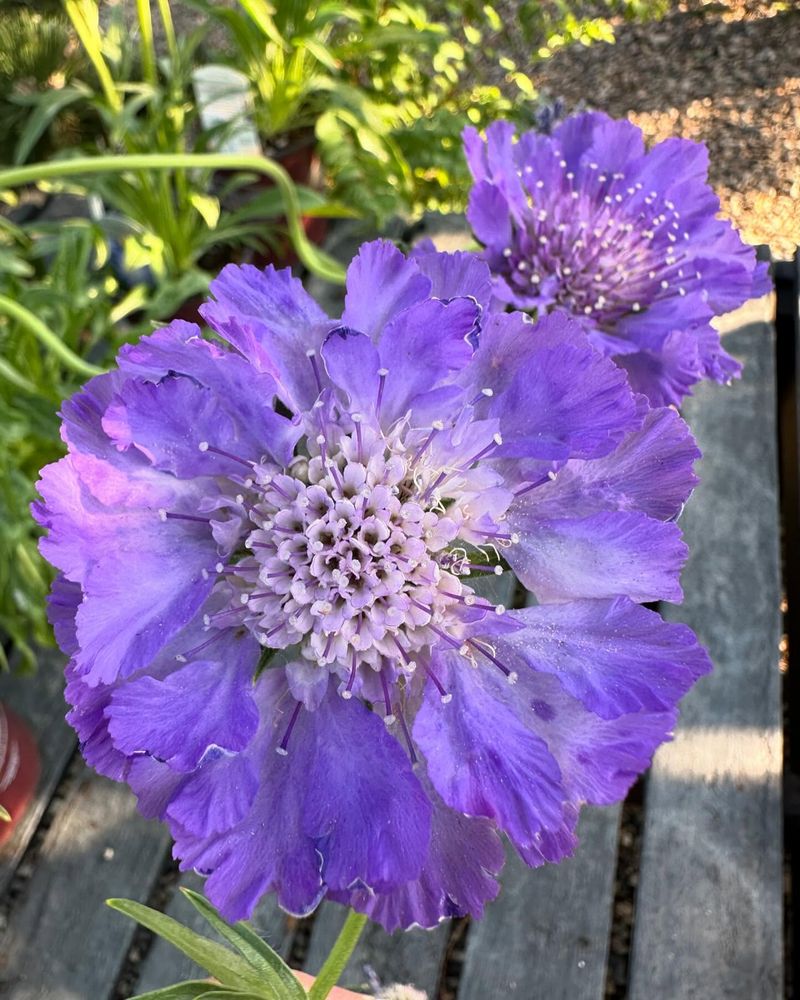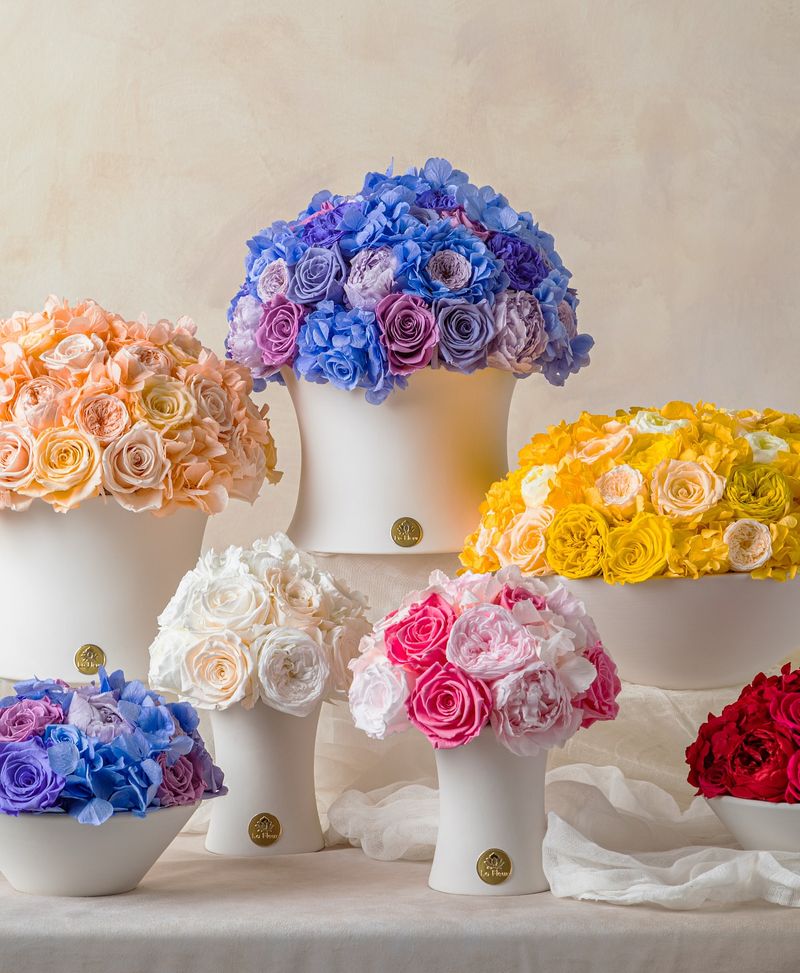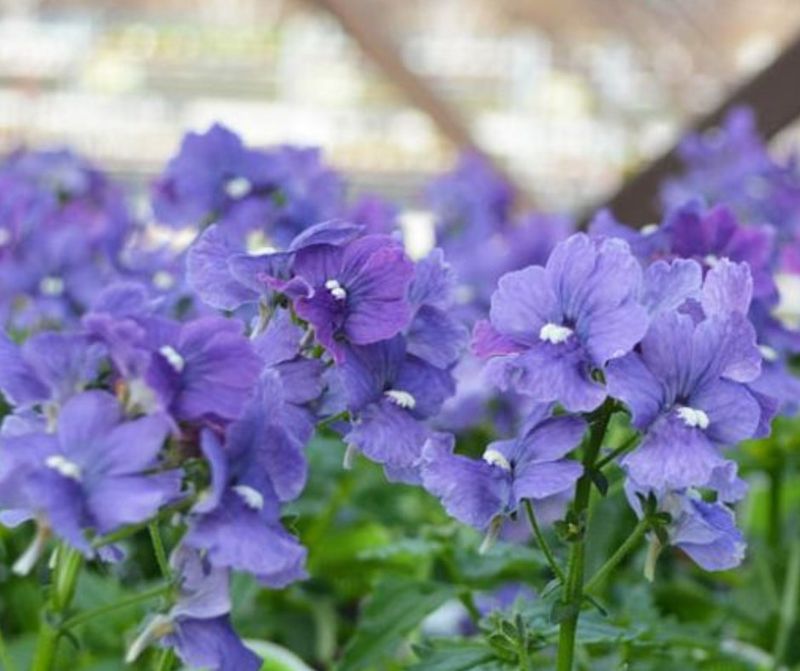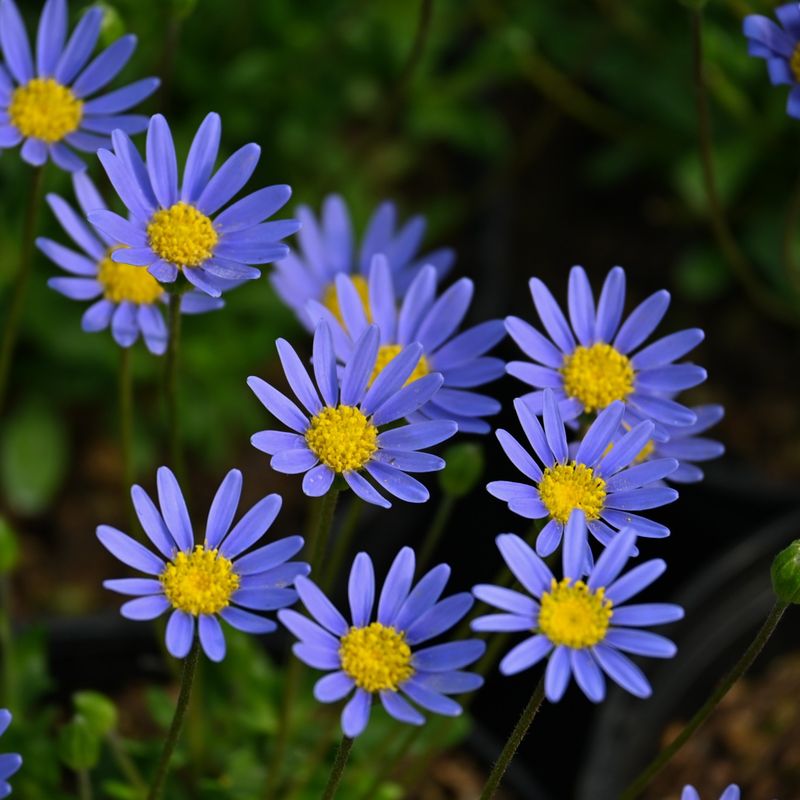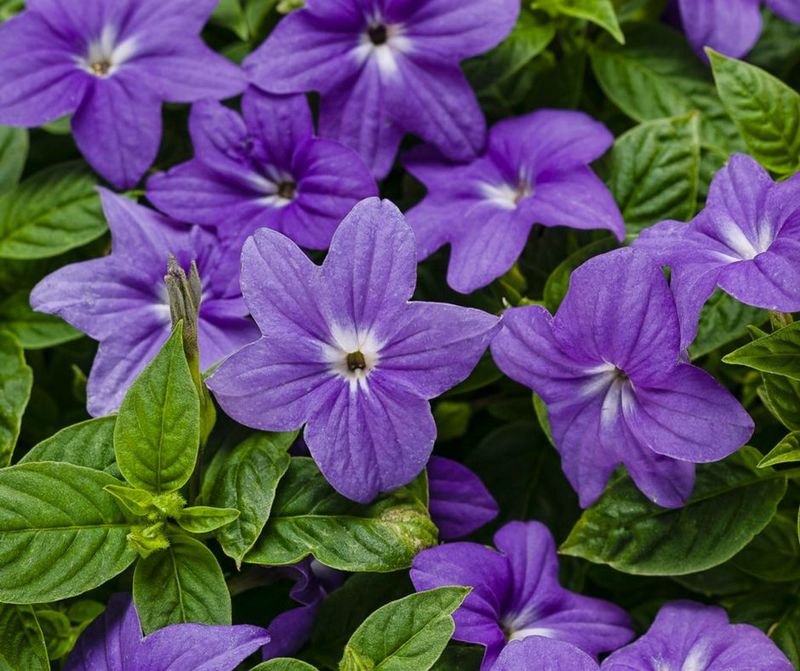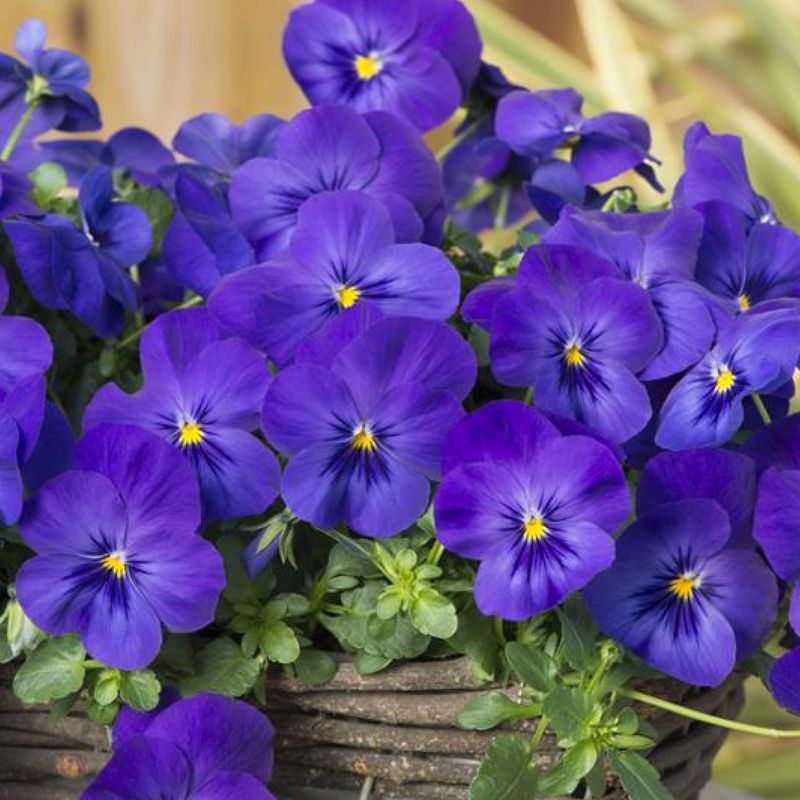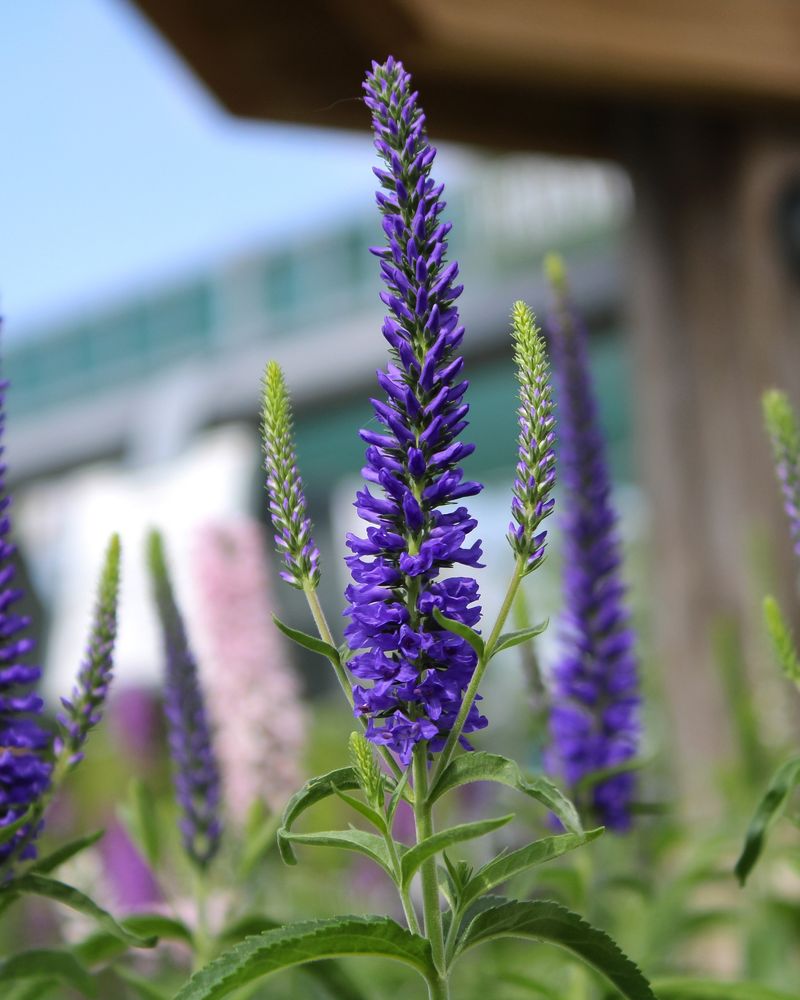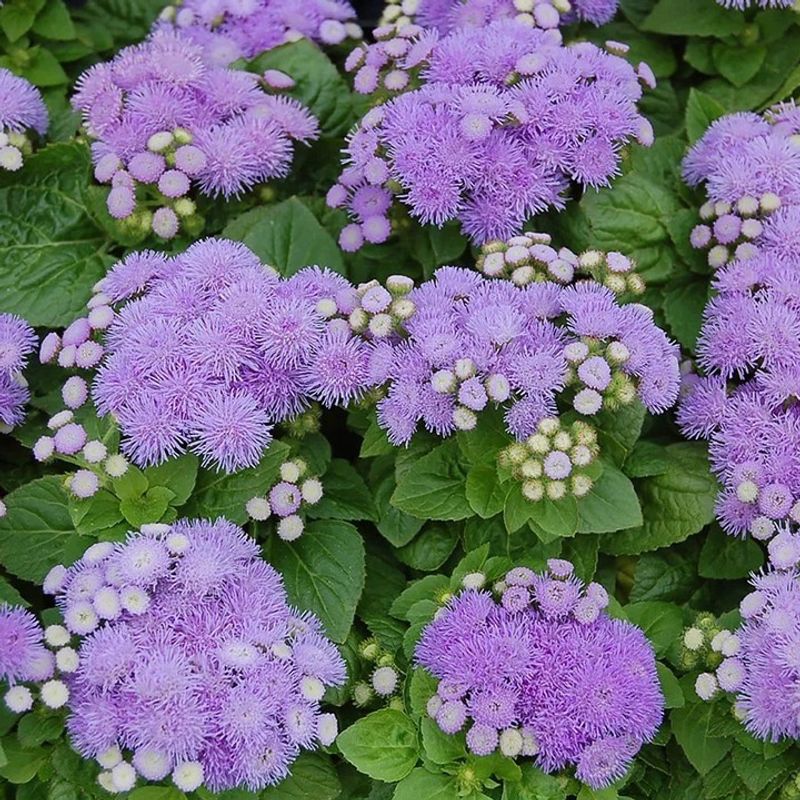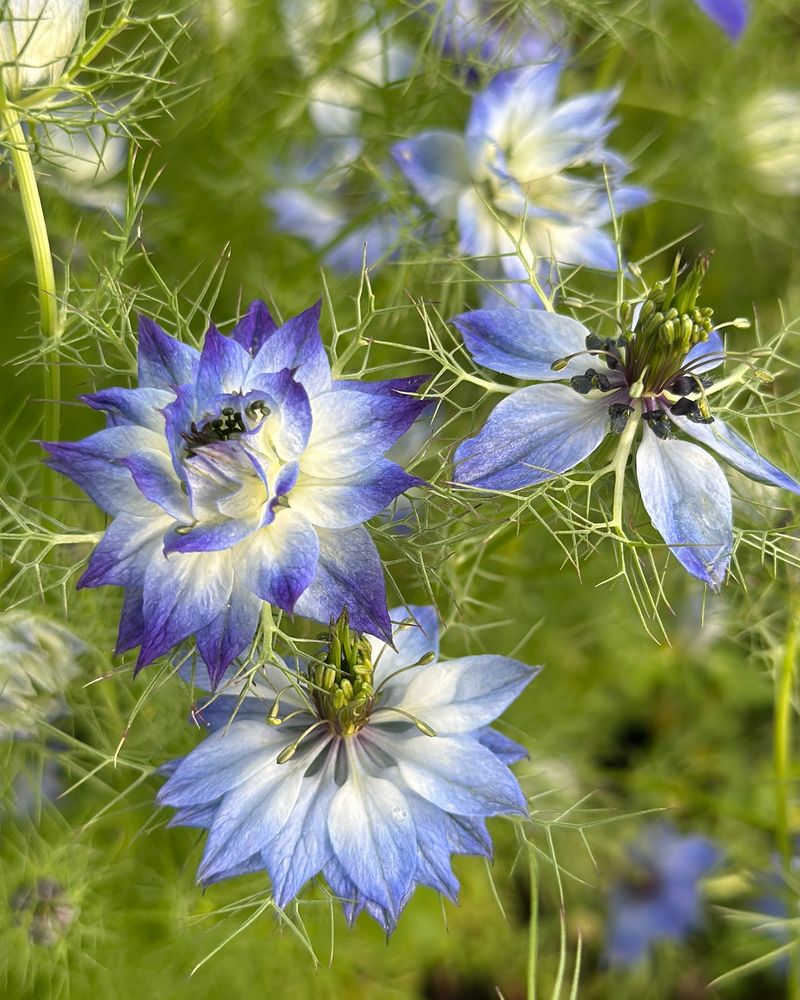Blue flowers have a way of stealing the show—cool, calm, and just a little unexpected. I didn’t think they’d make such a difference until I planted a few and suddenly my patio felt like a whole new spot.
They pair beautifully with just about anything and bring that laid-back summer feel without much effort. Some keep blooming with barely any fuss, while others just need a quick trim now and then.
If your patio’s missing something, these might be exactly what it needs.
1. Delphinium
These tall, majestic spires create a dramatic vertical element in any container garden. Their deep blue to purple blooms appear in early summer and can reach impressive heights even in pots.
Water delphiniums consistently but avoid wetting the foliage. They prefer morning sun with afternoon shade in hot climates. Add stakes for support as they grow, and deadhead spent flowers to encourage a potential second bloom before fall.
2. Hydrangea
Famous for their softball-sized blooms, blue hydrangeas create instant impact on patios. The color intensity depends on your soil acidity – more acidic soil produces deeper blue shades.
Keep soil consistently moist but not waterlogged. Morning sun with afternoon shade works best, especially in hot regions. For bluer blooms, add aluminum sulfate to your soil. Prune only after flowering as they bloom on old wood.
3. Lobelia
Cascading over pot edges with tiny star-shaped flowers, lobelia creates waterfall effects in hanging baskets. The vibrant blue color rarely fades throughout summer, making it a reliable showstopper.
Water frequently as lobelia dislikes drying out. Place in partial shade during intense summer heat to prevent wilting. Trim leggy growth midseason for bushier plants. Feed every two weeks with diluted liquid fertilizer for continuous blooming all season.
4. Morning Glory
Heart-shaped leaves and trumpet-shaped blooms make morning glory perfect for vertical patio spaces. The heavenly blue variety produces the most intense azure flowers that open with sunrise and close by afternoon.
Train vines on trellises or strings attached to railings. Plant in full sun with well-draining soil. Soak seeds overnight before planting to improve germination. Avoid overfertilizing or you’ll get more leaves than flowers.
5. Cornflower
Also called bachelor’s buttons, these feathery blue blooms bring cottage garden charm to patio containers. Their true-blue color is rare in the flower world and makes a striking statement against their silvery-green foliage.
Plant in full sun with well-draining soil. Cornflowers tolerate drought once established, making them perfect for busy gardeners. Deadhead regularly to extend blooming season. They attract beneficial pollinators and make excellent cut flowers for small summer bouquets.
6. Salvia
Spiky blue flower wands attract hummingbirds and butterflies to your patio sanctuary. Varieties like ‘Black and Blue’ offer dramatic deep blue blooms that continue from early summer through fall frost.
Plant in full sun with well-draining soil. Salvia thrives with moderate watering – let soil dry between waterings. Trim spent flower stalks to encourage reblooming. Most varieties are deer-resistant and drought-tolerant once established, making maintenance a breeze.
7. Forget-Me-Not
Tiny sky-blue flowers with yellow centers create clouds of color in spring and early summer. Their diminutive size makes them perfect for small containers or as fillers between larger plants.
Provide partial shade, especially during hot afternoons. Keep soil consistently moist but not soggy. They self-seed readily, so deadhead if you don’t want volunteers next year. Forget-me-nots pair beautifully with spring bulbs for extended seasonal interest.
8. Plumbago
Sky-blue clusters of flowers cover this shrubby plant all summer long. In warm climates, plumbago can bloom nearly year-round, creating a continuous display of powder-blue blossoms that resemble phlox.
Place in full sun for best flowering. Water when the top inch of soil feels dry. Prune lightly after flowering flushes to maintain shape and encourage more blooms. Plumbago thrives in heat and humidity, making it perfect for southern patios.
9. Agapanthus
Known as Lily of the Nile, these plants produce globes of blue flowers atop tall stems. The architectural quality of their blooms makes them perfect focal points in container arrangements.
Plant in full sun with well-draining soil. Water deeply but allow soil to dry between waterings. Agapanthus blooms best when slightly pot-bound, so don’t rush to repot. Protect from harsh winter conditions in colder regions by moving containers to sheltered areas.
10. Evolvulus
Often called Blue Daze, this low-growing plant produces sky-blue flowers that open in morning sun and close by evening. The silver-green foliage creates a beautiful backdrop for the true-blue blooms.
Provide full sun for maximum flowering. Allow soil to dry slightly between waterings. Trim lightly midseason if plants become leggy. Evolvulus works beautifully in hanging baskets or as a spiller in mixed containers, creating cascades of blue.
11. Scabiosa
Also called pincushion flower, scabiosa produces perfect blue buttons on slender stems that dance above the foliage. Each bloom is intricate with a center that resembles a pincushion surrounded by delicate petals.
Plant in full sun with well-draining soil. Water when the top inch of soil feels dry. Deadhead regularly to encourage continuous blooming throughout summer. Scabiosa attracts butterflies and makes excellent cut flowers for tiny bouquets.
12. Gentian
Intense cobalt blue trumpets make gentians truly special patio specimens. Their deep, almost electric blue color is unmatchable and creates a striking display in partially shaded container gardens.
Provide morning sun with afternoon shade. Keep soil consistently moist but not soggy. Use acidic potting mix for best results. Gentians prefer cooler temperatures, so they’re ideal for patios that don’t receive intense afternoon heat.
13. Nemesia
Masses of small, orchid-like blooms cover these compact plants from spring through fall. Blue varieties range from pale sky blue to deeper periwinkle shades, often with contrasting yellow or white centers.
Place in full sun to light shade. Water when the top inch of soil feels dry. Trim back by one-third after the first heavy bloom to encourage branching and more flowers. Nemesia performs best in moderate temperatures, making it perfect for spring and fall.
14. Campanula
Bell-shaped blooms in various blue shades dangle from compact plants, creating a charming display. Varieties like ‘Blue Waterfall’ cascade beautifully over pot edges, while upright types form tidy mounds.
Provide morning sun with afternoon shade in hot climates. Water when the top inch of soil feels dry. Trim spent flowers to encourage more blooms. Campanulas bloom heaviest in early summer but continue flowering sporadically if deadheaded regularly.
15. Felicia
Often called blue daisy, this South African native produces masses of cheerful, daisy-like flowers with bright yellow centers. The color is a true sky blue that’s rare in the flower world.
Plant in full sun with well-draining soil. Water when the top inch of soil feels dry. Pinch young plants to encourage branching and more flowers. Felicia blooms continuously from spring through fall if deadheaded regularly.
16. Browallia
Star-shaped blue flowers cover this compact plant from summer through fall. Often called sapphire flower, browallia brings an unusual blue tone that works well in partially shaded containers.
Provide bright, indirect light or morning sun with afternoon shade. Keep soil consistently moist but not soggy. Fertilize every two weeks during growing season. Browallia makes an excellent filler plant in mixed containers or shines as a solo specimen.
17. Pansy
Cool-weather champions, blue pansies with their familiar “faces” brighten spring and fall patios. Their velvety petals range from pale sky blue to deep purple-blue, often with contrasting centers.
Place in full sun during spring and fall, partial shade in summer. Water consistently, keeping soil moist but not waterlogged. Deadhead regularly to prevent seed formation and encourage more blooms. Pansies appreciate regular feeding with liquid fertilizer for continuous flowering.
18. Veronica
Spikes of tiny blue flowers create vertical interest in container gardens. Commonly called speedwell, veronica produces slender wands of blue that attract butterflies and add architectural elements to arrangements.
Plant in full sun with well-draining soil. Water when the top inch of soil feels dry. Cut back flower stems after blooming to encourage a second flush. Veronica combines beautifully with trailing plants in mixed containers.
19. Ageratum
Fluffy blue pompoms cover these easy-growing annuals all summer long. The soft, powder-blue color blends beautifully with other flowers and provides a cool visual element in hot weather.
Provide full sun to light shade. Water when the top inch of soil feels dry. Pinch young plants to encourage bushiness. Ageratum rarely needs deadheading as it’s self-cleaning, making it perfect for low-maintenance container gardens.
20. Nigella
Also called love-in-a-mist, nigella produces delicate star-shaped blue flowers surrounded by feathery foliage. The unusual blooms are followed by decorative seed pods that add interest even after flowering.
Sow directly in containers in full sun. Water moderately, allowing soil to dry slightly between waterings. No deadheading needed – the seed pods are ornamental. Nigella self-seeds readily, so you’ll likely enjoy volunteers in next year’s containers.

